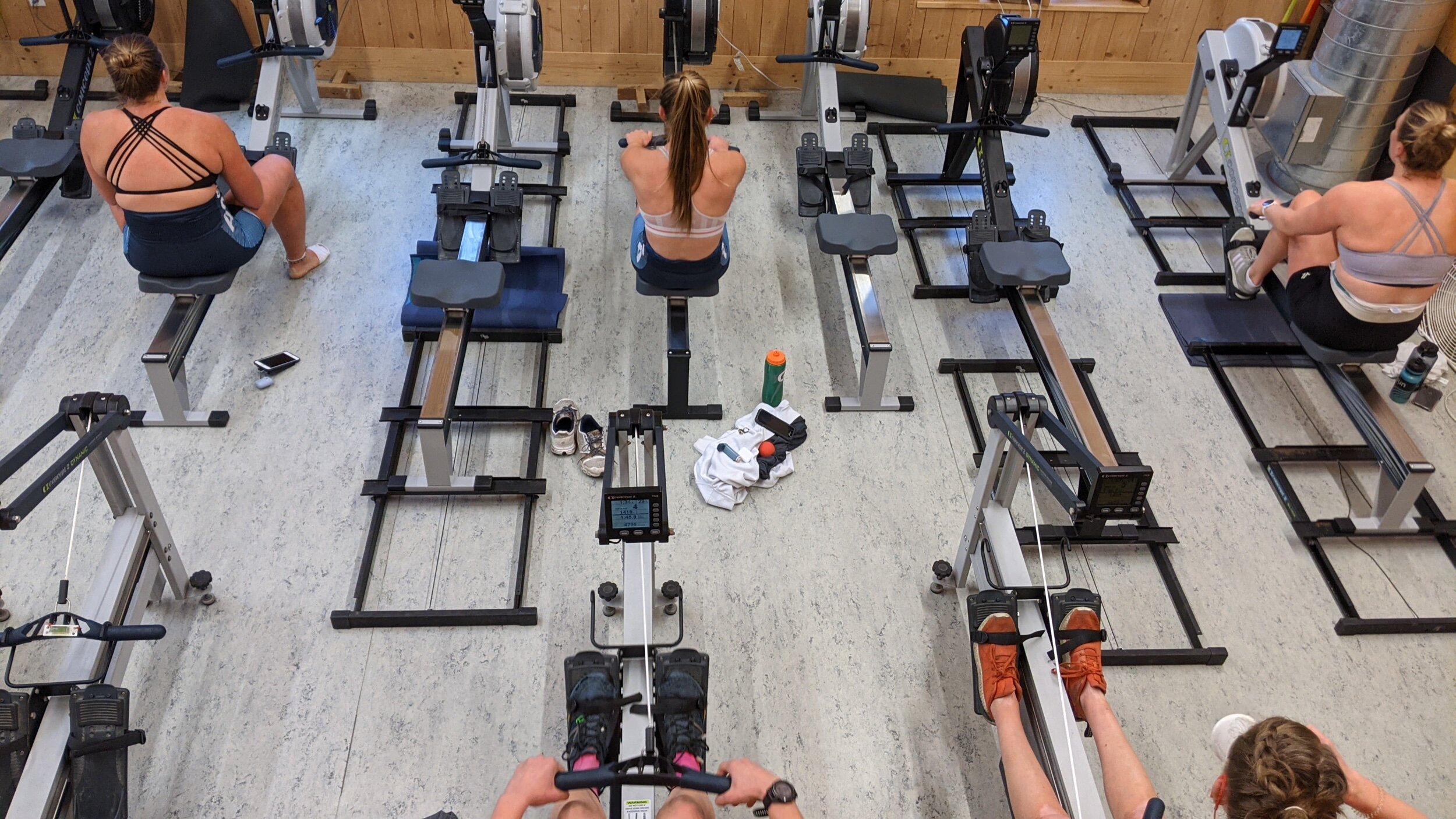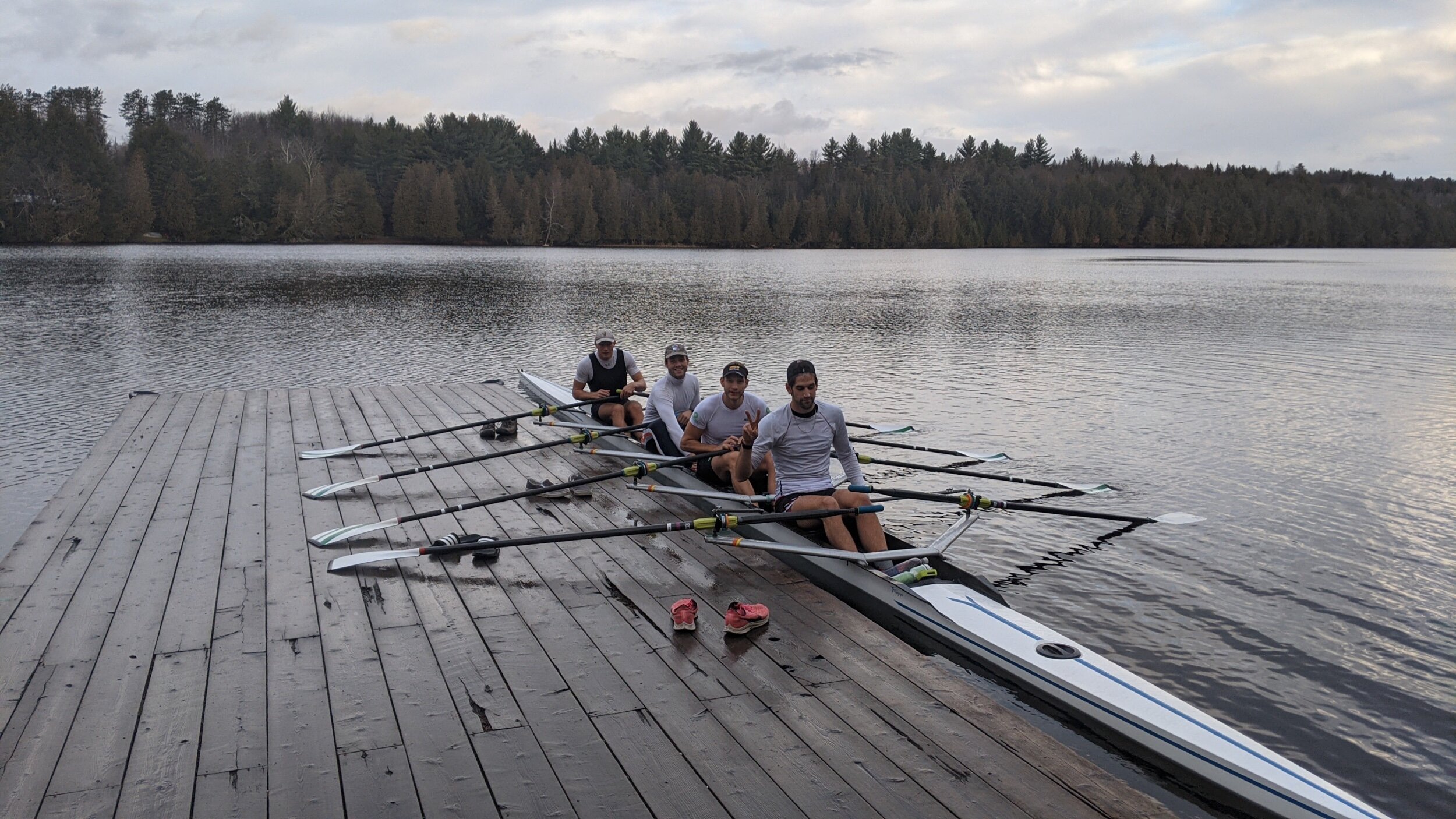Attack The Hill - The Winter Training Slog
Written by GRP Rower Web Thompson
When I started rowing in high school, my very first workout was a crucible, notorious as one of the most demanding and feared sessions of the season. It consists of sprints, less than a quarter mile each, up Stickney Hill by our boathouse. We had four minutes to complete each rep, our coach assuming it would take about one minute to run up the hill, two to make it down (with an emphasis on guarding our knees), leaving one enticing minute to rest. If we couldn’t finish a sprint in the four minutes provided, we were pulled from the workout. For freshman me, four minutes was a big ask. It took me about two minutes to get up, meaning I had to run down at a knee-pounding pace to make it back in time for the next rep. By number nine I was absolutely shot, and I realized there would be no tenth. Stickney had bested me.
As I watched all my new teammates finish the workout without me, I approached my coach. Once I’d caught my breath, I asked with my best sarcastic tone, “What’s the secret to getting up so fast?” I knew there was no secret, that I simply was not fit enough, but I wanted to keep it lighthearted. Mr. Chip Campbell, however, knew that part of me was looking for a real answer. He offered one terse piece of advice that has stuck with me in every athletic endeavor since. “Attack the hill.”
Winter training for rowing feels as if you’re endlessly sprinting up a hill. Logging thousands of kilometers on the ergs, usually followed by some sort of heavy lifting is one thing. Not knowing exactly when you’ll be able to get on the water next is what can drive you to madness. The physical exhaustion of training pales in comparison to the mental burnout of hours under incandescent lights, queuing up the same playlist, and staring at splits. For me, the high volume on the erg also carries a bit of anxiety. Maybe the next workout is the one where my back gives out; maybe my knees or hips will start to ache more than they should between sessions. It sometimes feels as if you’ve just reached the top of Stickney Hill and you only have 30 seconds before the next rep.
When I was a freshman in college, attacking felt like a way for me to stand out. I believed attacking the hill meant trying to pull the fastest times on the erg and lift the heaviest weights. I was desperate to improve as quickly as possible, and I interpreted that as pushing my limits with every workout. I was clawing my way up the hill with no regard for the toll it was taking on my body.
Throughout college, as I kicked up my training schedule and as I suffered the consequential injuries, I realized that I had misinterpreted Coach Campbell. Attacking the hill does not translate as “attack yourself,” exerting an all-out effort at all times. We are not meant to fight the hill, but to find the best way to continue moving at a steady pace up and down and up again. Do each rep as fast as you can, but make sure you can survive all ten. That means listening to your body, recovering, and using every tool in your personal training kit to keep pushing.
I learned that every challenge becomes an opportunity to approach training differently, individually. For me, that means cross training, usually by supplementing my cardio with time on the bike. It also means keeping in touch with my former trainer from UVA and my PT from home to make sure I have enough core exercises and mobility circuits to keep my body sorted.
December has already awarded us with some new freedoms. The uncharacteristically warm weather at the beginning of the month allowed us to row in team boats, something unimaginable in a Vermont winter. Once the snow sticks for long enough, I’ll take up to cross-country skiing, something many of the world’s best scullers do in the off months. It’s also a proven vaccine against winter-training cabin fever.
In other words, I have new ways to attack the hill. It’s no longer a question of if I’ll be able to get up in the time provided, but how I can find the best way to tackle the challenges. That means setting myself up to take every stroke on the erg mindfully, to push every lifting rep, allowing myself to rest and recover. And when things seem as if they’re falling apart, I’ll take a deep breath and remind myself of Coach Campbell’s words.



